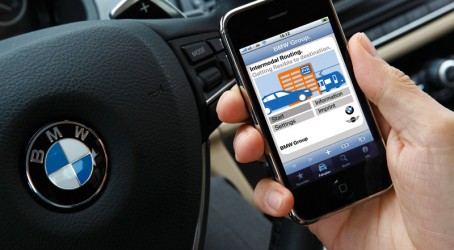It’s a complex operation here at Straubing, but some might be surprised that this work is being done in Germany rather than in a lower-cost economy. Why is that the case?
We are supplying our major customers here and our strategy is to follow our customers. From a final assembly point of view, and from an engineering point of view, we want to be close to our customers.
Why do you also use a plant in Hungary to supply Straubing?
Straubing is what we call the flagship plant for Germany, and Hungary is a partner. A partner manufacturing site, no less important in terms of just-in-time, quality delivery and, of course, cost. In Hungary they make parts which are assembled and tested, but also a major function is delivering modules to our final assembly plants, such as Straubing, for BMW and Audi.
The automotive industry seems to have picked up in Germany as it has in the UK. Are you satisfied things are moving in the right direction?
Of course there has been an increase. Without naming any specific customers, there are ones in our portfolio which are doing very well, still, showing very interesting growth, and there are others which are currently struggling, depending on which markets they are in.
Luckily the US is a strong market for many of our customers. Asia is a strong area in which our customers are doing well – just think about how Audi or VW Group is growing in Asia.
We need to see what the next few months hold from an overall demand point of view. But BMW, for example, is confident its volumes are going to increase, so therefore it has increased its numbers of permanent staff. That’s a good sign.
Is your strategy overseas to remain close to your customers as here at Straubing?
Yes, and it is not only our strategy, it is a clear request from our customers to support them. Audi is growing in Asia and BMW is growing in Asia; then their request is that we are present in Asia as well – the same is true in the US. Similarly to our operation in Hungary, we have a factory in Mexico to support our plants in the US.
What should be the biggest focus for R&D at Harman?
When you look into the different divisions, the current size of infotainment is the biggest with about a 55% share of sales. You can imagine that a major focus has been, and will be in the future, on the engineering and development of infotainment.
But we have to focus on all the divisions. We are privileged to be a technology leader in all of them. One of our huge strengths is that we can leverage the technologies between divisions.
For example, you can find technology in a car that has its origins in our professional division, which provides huge arenas and concert halls with high-end audio. Whatever is invested in professional can make its way into consumer or lifestyle.
Will some of the infotainment and high-tech systems seen here in luxury vehicles eventually filter down to more ordinary cars? To entry-level vehicles?
Let’s start with navigation and connectivity. Navigation is more or less going down already to the entry level and BMW has already made available a cross-car platform. It means best-in-class navigation down to a 1 Series or a 3 Series.
In terms of connectivity, speech recognition is closing that gap: it is converging, although it will take some time. Voice recognition might take some time to penetrate into the lower end or the entry segments.
Driver assistance, which we make available in an affordable manner, by integrating the processor with the head unit, that lowers the overall system price.
Do you see technologies such as driver assist and augmented reality as complementing future strategies such as moves to introduce platooning or self-driving cars?
Absolutely. But there are different dimensions. First of all, a drive should be a pleasure, but at the same time safe, with driver distraction minimised. The challenge here is that more content and functionalities are coming into the car and this will not stop. People are demanding more and more in terms of functionality: connectivity and apps. But our job is to integrate everything that is coming into the car in a safe manner.
Our driver-assist solutions are going to help in that regard. So we are able to bring internet content into the car without any driver distraction. That’s an example of how whatever we do in terms of new technology is done with safety as the
top priority.
As an engineering firm at the centre of Europe, how do you feel about the prospects for the European Union and the single currency? The crisis seems to be interminable.
As an optimistic person, I see things becoming better – although it will take some time, that’s for sure. We might see some dips. For us as a company, we are global and are covering different regions, and that’s important.
So I see us as well-prepared whatever is going to happen. But I’m optimistic that we will eventually overcome the situation in Europe.
